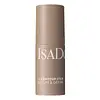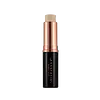What's inside
What's inside
 Key Ingredients
Key Ingredients

 Benefits
Benefits

 Concerns
Concerns

 Ingredients Side-by-side
Ingredients Side-by-side

Dicaprylyl Carbonate
EmollientEthylhexyl Palmitate
EmollientTitanium Dioxide
Cosmetic ColorantNeopentyl Glycol Diheptanoate
EmollientZinc Oxide
Cosmetic ColorantSynthetic Wax
AbrasiveSilica
AbrasiveHydrogenated Sunflower Seed Oil
Skin ConditioningGlyceryl Dibehenate
EmollientJojoba Esters
EmollientTribehenin
EmollientGlyceryl Behenate
EmollientSynthetic Fluorphlogopite
Lecithin
EmollientTocopherol
AntioxidantDisteardimonium Hectorite
StabilisingAscorbyl Palmitate
AntioxidantCitric Acid
BufferingCI 77492
Cosmetic ColorantCI 77891
Cosmetic ColorantCI 77491
Cosmetic ColorantCI 77499
Cosmetic ColorantDicaprylyl Carbonate, Ethylhexyl Palmitate, Titanium Dioxide, Neopentyl Glycol Diheptanoate, Zinc Oxide, Synthetic Wax, Silica, Hydrogenated Sunflower Seed Oil, Glyceryl Dibehenate, Jojoba Esters, Tribehenin, Glyceryl Behenate, Synthetic Fluorphlogopite, Lecithin, Tocopherol, Disteardimonium Hectorite, Ascorbyl Palmitate, Citric Acid, CI 77492, CI 77891, CI 77491, CI 77499
Phenyl Trimethicone
Skin ConditioningDimethicone
EmollientIsononyl Isononanoate
EmollientSilica
AbrasiveBis-Diglyceryl Polyacyladipate-2
EmollientOzokerite
Emulsion StabilisingPolymethyl Methacrylate
Triisodecyl Trimellitate
EmollientPolyethylene
AbrasiveMicrocrystalline Wax
Emulsion StabilisingEuphorbia Cerifera Wax
Kaolin
AbrasiveEthylhexyl Palmitate
EmollientIsopropyl Myristate
EmollientIsostearic Acid
CleansingLecithin
EmollientLimnanthes Alba Seed Oil
Skin ConditioningPolyglyceryl-3 Polyricinoleate
EmulsifyingPolyhydroxystearic Acid
EmulsifyingSimmondsia Chinensis Seed Oil
EmollientSodium Magnesium Silver Phosphate
AntimicrobialTocopheryl Acetate
AntioxidantIron Oxides
CI 77891
Cosmetic ColorantPhenyl Trimethicone, Dimethicone, Isononyl Isononanoate, Silica, Bis-Diglyceryl Polyacyladipate-2, Ozokerite, Polymethyl Methacrylate, Triisodecyl Trimellitate, Polyethylene, Microcrystalline Wax, Euphorbia Cerifera Wax, Kaolin, Ethylhexyl Palmitate, Isopropyl Myristate, Isostearic Acid, Lecithin, Limnanthes Alba Seed Oil, Polyglyceryl-3 Polyricinoleate, Polyhydroxystearic Acid, Simmondsia Chinensis Seed Oil, Sodium Magnesium Silver Phosphate, Tocopheryl Acetate, Iron Oxides, CI 77891
Ingredients Explained
These ingredients are found in both products.
Ingredients higher up in an ingredient list are typically present in a larger amount.
Ci 77891 is a white pigment from Titanium dioxide. It is naturally found in minerals such as rutile and ilmenite.
It's main function is to add a white color to cosmetics. It can also be mixed with other colors to create different shades.
Ci 77891 is commonly found in sunscreens due to its ability to block UV rays.
Learn more about CI 77891Ethylhexyl Palmitate, also known as octyl palmitate, is created from 2-ethylhexyl alcohol and palmitic acid. It is a fatty acid ester.
The fatty acid content of Ethylhexyl Palmitate makes it an emollient. Emollients help soften and hydrate your skin by trapping moisture within.
Ethylhexyl Palmitate is also used to help improve the texture of cosmetics. It helps other ingredient dissolve in products and help disperse ingredients more evenly.
You'll likely find this ingredient in sunscreen, as it is often used to mix UV-blocking ingredients such as avobenzone and ethylhexyl triazone.
It can also help stabilize the fragrances in a product as a fragrance fixative.
Ethylhexyl Palmitate can be used to substitute mineral oil.
Due to its high fatty acid content, it may not be fungal-acne safe.
Learn more about Ethylhexyl PalmitateLecithin is a term for a group of substances found in the cell membranes of plants, animals, and humans. They are made up of mixture of phospholipids.
This ingredient has emollient and emulsifying properties.
As an emollient, lecithen helps soften the skin and creates a barrier to keep moisture in.
As an emulsifier, it also helps prevent water and oil ingredients from separating. Lecithin can also help ingredients be better absorbed by the skin.
This is because the phospholipids in lecithin produce liposomes. Liposomes help other ingredients get through the skin barrier.
Depending on the source of this ingredient, lecithin may not be fungal acne safe. This is because some sources of lecithin come from soybean oil, which may feed the malassezia yeast that feeds fungal acne.
We recommend reaching out to the brand you are purchasing from to inquire about the source of their lecithin.
Some other names for this ingredient include soy lecithin and deoiled soy lecithin.
Learn more about LecithinSilica, also known as silicon dioxide, is a naturally occurring mineral. It is used as a fine, spherical, and porous powder in cosmetics.
Though it has exfoliant properties, the function of silica varies depending on the product.
The unique structure of silica enhances the spreadability and adds smoothness, making it a great texture enhancer.
It is also used as an active carrier, emulsifier, and mattifier due to its ability to absorb excess oil.
In some products, tiny microneedles called spicules are made from silica or hydrolyzed sponge. When you rub them in, they lightly polish away dead skin layers and enhance the penetration of active ingredients.
Learn more about Silica